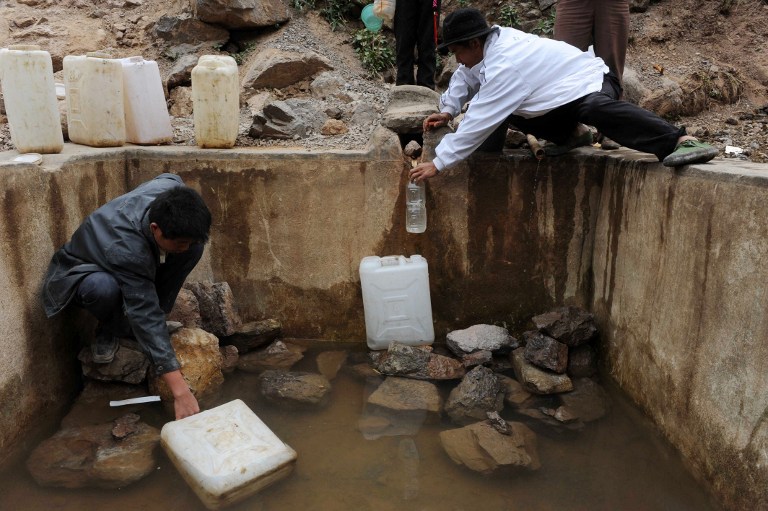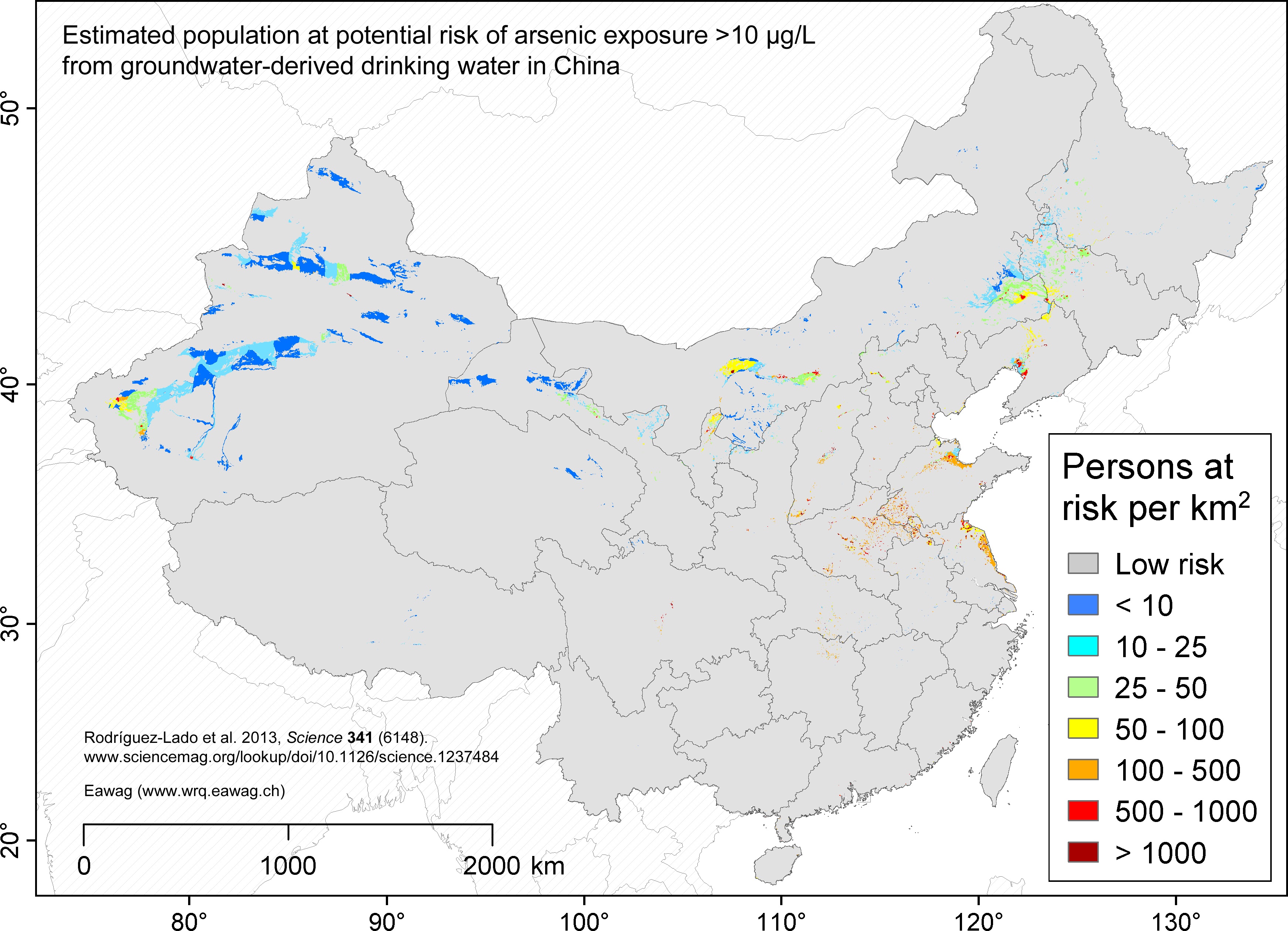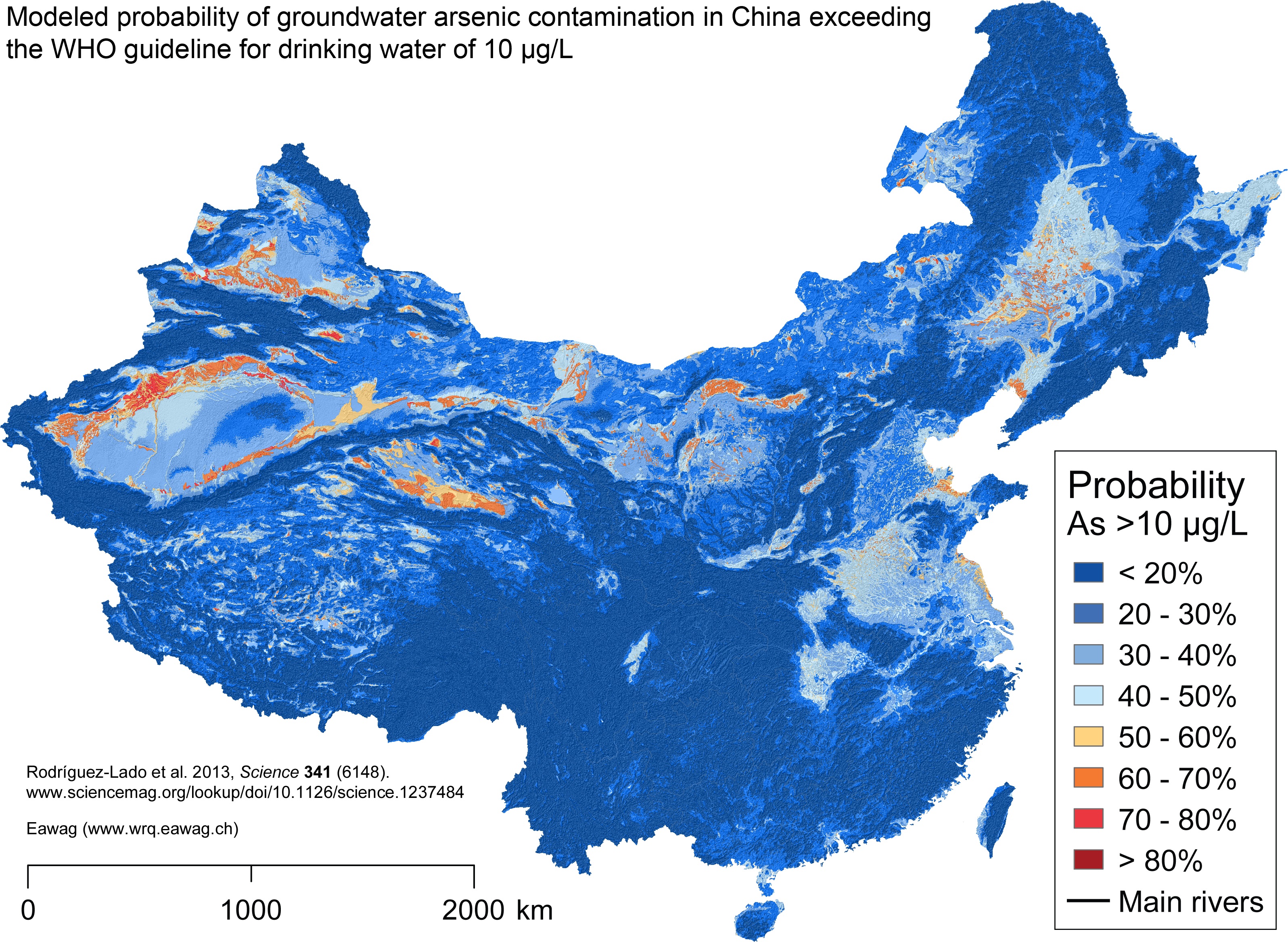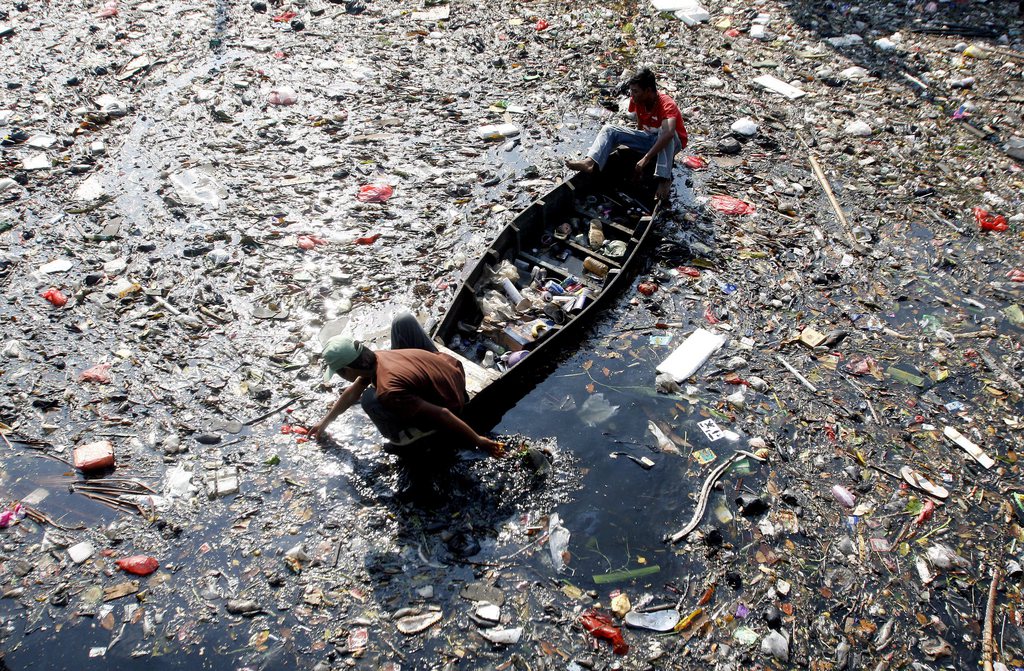Millions of Chinese may face arsenic poisoning

A new statistical model predicts that almost 20 million people across China are at a high risk for poisoning because they use arsenic-laden groundwater, Swiss and Chinese researchers warned on Thursday.
The scientists from Swiss Federal Institute of Aquatic Science and Technology Eawag and the China Medical University in Shenyang estimate that naturally occurring arsenic concentrations above World Health Organisation threshold are found over 580,000 square kilometres, mainly in Xinjiang, Inner Mongolia, Henan, Shandong and Jiangsu provinces.
China in 2004 estimated that 14 million people were at risk for poisoning by arsenic – traces of which naturally occur in the Earth’s crust all around the globe.
The researchers’ new model not only confirmed known areas of high-risk but also identified new regions, including provinces in the North China Plain and the central part of the province of Sichuan, according to an article published in the scientific journal Science.
“These are the locations where the arsenic risk coincides with a high population density, so it is in these hotspots where the groundwater should be tested for arsenic first,” Annette Johnson, a geochemist at Eawag, told swissinfo.ch.

More
Estimated population at risk
Endemic disease
Since the 1960s, it has been known that groundwater resources in certain provinces of China are contaminated. Estimates of the numbers of affected people have risen year by year. In 1994 the Chinese government declared arsenic poisoning an endemic disease and conducted a massive screening programme to sample wells in about 12 per cent of the counties.
The survey conducted by the Chinese Ministry of Health between 2001 and 2005 showed that 20,000, or five per cent of the 445,000 wells tested showed arsenic concentrations above 50 micrograms per litre, five times more than the recommended 10μg/L.
Johnson and her colleagues combined these findings with the results of the most recent water survey and population figures as well as existing data on geology, soil characteristics and topographic features.
This model allows the researchers to better identify the regions where contamination is most likely because of similar conditions and thus more accurately estimate the numbers of people at risk. It would have taken several more decades and a lot of money to screen all ten millions of groundwater wells for arsenic contamination given the size of the country, Johnson explained.
Dangerous for consumption
Arsenic poisoning from contaminated groundwater was first observed in the late 1970s in a part of China that is very arid, and where the population relies on underground layers of rock that contain water. In these so-called aquifers, sedimentary deposits from volcanic rocks and other sources, can contain naturally occurring arsenic that is dangerous for consumption.
One of the main problems is that the concentrations of arsenic may vary widely even within the same area, Johnson said. The concentrations are for example more prevalent in fine sediments which are oxygen-deficient, but those may be very closely located to coarse sediments, Johnson explained. People in many areas are completely unaware of the risk because their groundwater wells have never been screened.
Arsenic poisoning due to the use of contaminated drinking water is a major health problem, Johnson said. Long-term exposure to arsenic first causes hyperpigmentation of the skin, and patients may later develop disorders of liver and kidney function, and various types of cancer.
According to official estimates, almost six million people consume drinking water with an arsenic content of more than 50μg/L and almost 15 million are exposed to concentrations exceeding the 10μg/L WHO guideline.
“The new figures may be overestimated, as we lack reliable information on the number of people with treated water supplies,” Johnson said. The researchers also note that there is not only debate about the reliability of information, but also about the risk levels of arsenic.

More
Arsenic contamination in China
Detrimental effects
“Experts estimate that five to ten years of exposure may already lead to cancer,” Johnson explained. “But the detrimental effects highly depend on factors such as age, nutritional status, and general health of the person.”
Cases of chronic arsenic poisoning are particularly well-known in Southeast Asian countries like
Bangladesh. Since the 1990s, reports continue to reveal new regions of the globe, including
Central Europe, South America, Mongolia and some parts of the United States, in which groundwater is also contaminated with this chemical.
Eawag was keen to work with its Chinese partners to complete its global maps of arsenic and fluoride contamination, where a lot of data was missing for China. At the same time, the Chinese feedback has helped the Swiss researchers to better understand the contamination in arid areas in other parts of the world, Johnson explained.
The Sino-Swiss Science and Technology Cooperation Programme of the Swiss State Secretariat for Education and Research and the External Cooperation Program of the Chinese Academy of Sciences funded the research. The resulting model may also be used in other countries where groundwater may be contaminated with arsenic and for other pollutants, the researchers said.
“On a global scale, we hope our work can serve to highlight that drinking water quality is an important issue,” said Luis Rodriguez-Lado, the lead author of the study. “This kind of study can help to implement prevention policies to improve the wellness of millions of people, especially in developing countries.”
Arsenic is one of the most common inorganic contaminants found in drinking water world-wide.
The metalloid occurs as a natural component of sediments, with small quantities being dissolved in
groundwater as a result of weathering.
The inorganic salts of arsenic are tasteless and odourless, but highly toxic to humans. If ingested over long periods, even low concentrations can cause damage to health, including hyperpigmentation of the skin, hyperkeratosis on the palms and soles, disorders of liver, cardiovascular and kidney function and various types of cancer.
Concentrations below 10μg/L are considered safe. This concentration is therefore recommended by the World Health Organization as a guideline value for arsenic in drinking water.
In China, the standard guideline has just recently changed from 50μg/L to 10μg/L. In many other studies, e.g. at various sites in Inner Mongolia, arsenic concentrations of more than 100μg/L and up to 1500μg/L have been measured.

In compliance with the JTI standards
More: SWI swissinfo.ch certified by the Journalism Trust Initiative


You can find an overview of ongoing debates with our journalists here. Please join us!
If you want to start a conversation about a topic raised in this article or want to report factual errors, email us at english@swissinfo.ch.